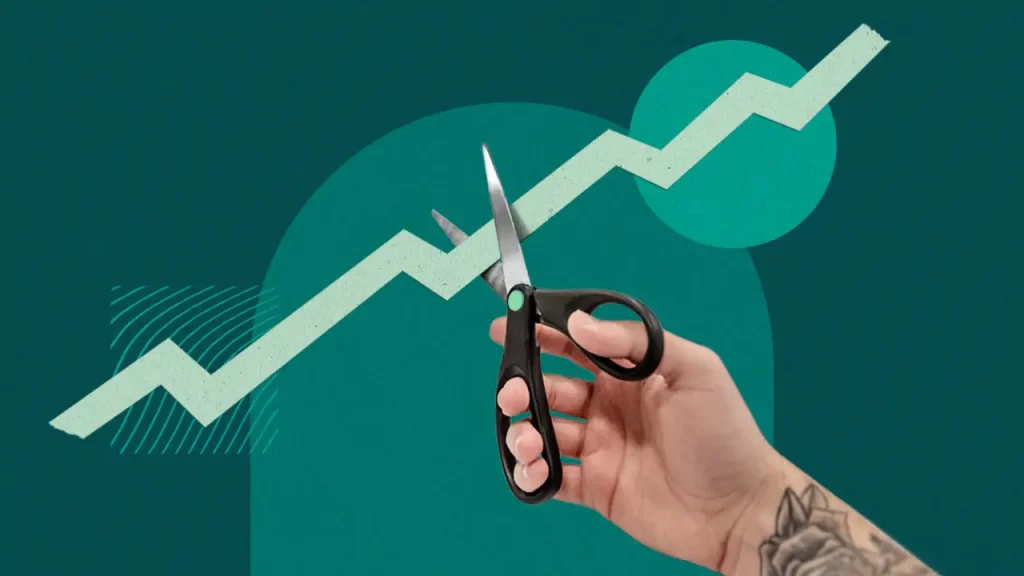
The Federal Reserve has projected just one interest rate cut this year. The latest round of monthly data has some economists worried it won’t come soon enough.
On Tuesday, retail sales data for May revealed that the pace of consumer spending is cooling down from last year, easing concerns about an economy running too hot in the fight against inflation. In the labor market, while last month’s job additions came in higher than expected, the unemployment rate hit 4%, its highest level since January 2022. Overall, Citi’s Economic Surprise Index, which measures the extent to which data has come in better than forecast, is hovering near its lowest level in more than a year.
Inflation data for May, meanwhile, was more promising than expected. The headline Consumer Price Index (CPI) increased at its slowest pace since July 2022. When combining that data with a reading on wholesale prices in May, economists believe the Fed’s preferred inflation gauge, the Personal Consumption Expenditures (PCE) index, increased at its slowest pace of the year during May.
With inflation falling and the economy slowing, Renaissance Macro’s Neil Dutta believes it’s time for the “Fed to get on with it” and begin cutting interest rates soon. This, Dutta says, will help protect the Fed’s other mandate in addition to price stability: maximum employment.
“The momentum behind core inflation is probably going to continue softening from here,” Dutta told Yahoo Finance. “Then I think for the Fed, the trade-offs with the labor market are becoming a little bit more onerous.”
Dutta points out that any sign of weakness in the labor market has so far been regarded as a sign of rebalancing after the pandemic threw supply and demand out of whack.
Federal Reserve Chair Jerome Powell has acknowledged as much.
“We see gradual cooling, gradual moving toward better balance [in the labor market],” Federal Reserve Chair Jerome Powell said on June 12 after the central bank’s most recent policy meeting. “We’re monitoring it carefully for signs of something more than that, but we really don’t see that.”
But what concerns Dutta, and the economics team at Goldman Sachs, is where the data usually heads from here. The job openings rate is now in line with pre-pandemic levels. If it were to decline further, a pickup in the unemployment rate would usually accompany the downward trend, Dutta said, referencing the Beveridge curve.
As work from the Federal Reserve highlights, the dots on the Beveridge curve moving further along the right axis (as seen in the chart below highlighted in red) would come with diminished chances of a soft landing and, possibly, recession.
“I just don’t think the Fed wants to really push the weakening in labor demand that much more,” Dutta said.
He added, “The Fed knows that. It’s not like the risk at this point is for the unemployment rate to unexpectedly go down. The most likely distribution of outcomes is that it’s stable or it goes higher.”
To be clear, Dutta and other economists are more concerned about how the economic data could spiral from here rather than where it sits today. Many aren’t overly concerned about the current trends quite yet.
Deutsche Bank chief US economist Matthew Luzzetti told Yahoo Finance the “risks” in the labor market are there. But at this point, it looks more like the spending power of the US consumer is slowing toward a normal pace, not trending toward a drop-off.
“While there are some strains, particularly for parts of the households, I would be surprised if you saw a slowing in the labor market and a slowing in the consumer that was enough to get them to cut by September,” Luzzetti said.
From a stock perspective, investors have taken the current Fed outlook in stride. The S&P 500 (^GSPC) and Nasdaq Composite (^IXIC) have been on a string of record closes. Three equity strategists just boosted their year-end outlooks for the S&P 500 as tech companies continue to perform better than expected.
But one of those strategists, Citi US equity strategist Scott Chronert, highlighted that the economy’s “fraying” around the edges will continue to be a point of interest for investors moving forward after corporate executives were “cautiously optimistic” during first quarter earnings calls.
“We’re going to be watching that pretty closely,” Chronert told Yahoo Finance. “I think, in general, what we’re going to see as we go into the Q2 reporting period is a little bit more evidence that the lagging effects of Fed rate hikes to this point are starting to weigh on fundamental activity. So, we have to be aware of that.”
Some are worried that in exercising caution on inflation, the Fed could inadvertently wait too late to move and hurt the economy. With excess savings dwindling and credit card delinquencies rising, Allianz chief economic adviser Mohamed El-Erian told Yahoo Finance that small businesses and lower-income households, which are already struggling amid higher rates, could be left out to dry.
El-Erian argued that the balance of risks for the Fed if it waits until the end of the year to cut “is in favor of them being too late and the economy slowing more than it should.”
























